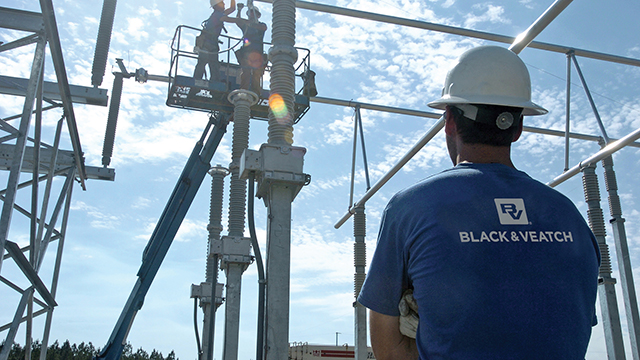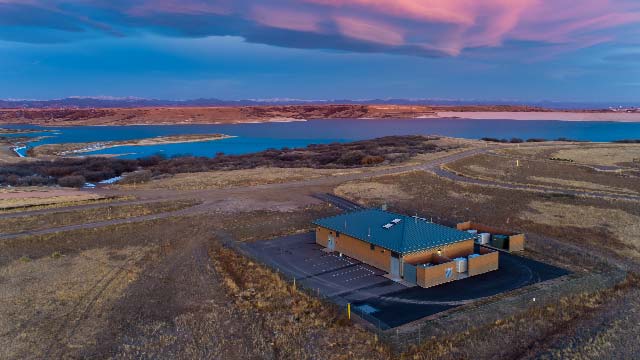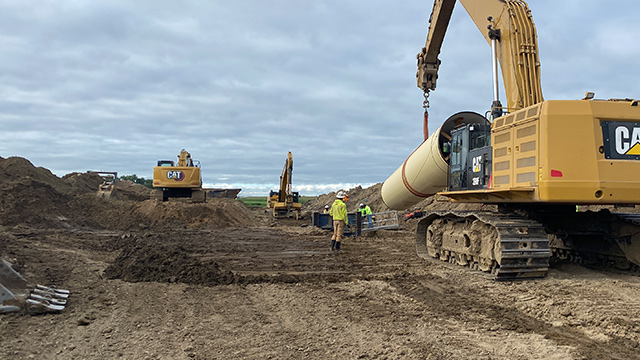As the need for sustainability and resilience drives conversations in the industry more than ever, water and wastewater utility decision-makers are gaining awareness of the need to get greener — and the rewards that presents — in ways they hadn’t considered just a decade or two ago.
It’s an evolving push with complexities of costs and deliberations, starting with how decarbonization can and should fit into a water utility’s sustainability goals. Should they continue to rely on passive gas-powered generators as backup power sources when active, more climate-conscious options exist? Are they fully recognizing the linkages between decarbonization and the energy-intensive requirements of the full cycle of water management: collection, treatment, distribution and storage? How does water conservation, water reuse and mitigating water loss factor in? What about the compounding effects of climate change?
Black & Veatch’s 2022 Water Report puts it all into focus, with results of a survey of more than 300 U.S. water sector stakeholders making clear that issues of sustainability are receiving a broader conversation and adoption. Decarbonization — essentially any approach that directly cuts greenhouse gas emissions and energy use — is helping pave the way.
Sustainability: Focus, Blueprints are Essential
For purposes of this report, Black & Veatch defines the sizes of water utilities by two categories — those termed “larger” because they serve more than 500,000 customers, and those who serve less than that threshold.
Overall, nearly two-thirds of respondents consider sustainability to be a critical strategic focus in the water sector, with seven in 10 from the larger utilities viewing it that way compared with 58 percent of their smaller counterparts. One-third in general — and 40 percent of the smaller utilities — say sustainability “sounds good” but isn’t a priority.
Breaking that down a bit further, some 72 percent said they have sustainability goals and associated performance metrics. That’s impressive, up about 7 percentage points over 2021 and perhaps illustrating how water utility leaders are recognizing the role the sector can play in potentially influencing communities. The increase in severe weather events such as hurricanes, flooding, drought and wildfires merely sharpens the point.
Nearly nine in 10 — 87 percent — of the larger utilities say they have sustainability goals and the means to measure them, most noticeably in the West and Northeast. Some 63 percent of the smaller utilities report having sustainability goals and the related metrics.
In terms of what’s in such sustainability strategies, water loss mitigation (67 percent), new or alternative water supplies (57 percent) and renewable energy (48 percent) lead the way. Decarbonization goals followed distantly at 25 percent, perhaps because utilities don’t have a baseline about that topic, much less the clarity about how to set a goal for it.

Slightly more than half — 52.3 percent — say they’re feeling no pressure from their community or regulators to adopt sustainability practices. Roughly seven in 10 of the larger utilities say they’ve experienced such pressure, compared to some 40 percent of their smaller counterparts. That disparity makes sense, given that larger utilities have a more prominent place in their communities, and regulators see them as a regional leaders with an ability to influence area utilities.
Promisingly, utilities more than ever are mapping out their sustainability missions, with three-quarters of respondents saying their utility has some type of blueprint for it, even if it’s just merely covered by the municipality’s overall plan. Roughly one-third of respondents report that their municipality and water utility share a sustainability blueprint — a united vision that often proves most successful because both get the holistic synergies of being on the same page. Conversely, more than one-quarter — 28 percent — say their jurisdiction and utility have unrelated sustainability roadmaps, with an additional 23 percent acknowledging that neither entity has any such framework at all.

Active vs. Passive: Backup Power
Even as activists, ratepayers and regulators press for water utilities to get cleaner and greener, carbon maintains its grip when it comes to the industry’s backup power sources in a sector that consumes massive amounts of energy. Nine in 10 respondents still lean on generators powered by diesel fuel or gasoline as a localized, reliable option when unplanned outages strike, easily outpacing electricity (27 percent), natural gas (24 percent) and “new energy” standards such as battery (17 percent) and solar or other renewables (14 percent).
Virtually all respondents (95 percent) at the smaller water utilities prefer fuel-powered generators when needed, compared to 73 percent of their larger counterparts. Forty percent of those larger utilities also say they rely on renewable energy as a backup, dwarfing the 3 percent cited by their smaller peers, perhaps because larger utilities can better afford that option. Less than 5 percent of respondents, regardless of their utility’s size, have no backup power source.

The reliance on generators may represent the perspective that switching to greener options is unnecessary, given the infrequency of unplanned outages or the relatively small carbon footprint the occasional use of a generator creates. As a result, the priority remains on the main source of energy for utility operations to drive a reduction in carbon emissions. It also could be the perspective that other decarbonizing technologies still are evolving, not fully proven and, for now, too pricy to justify to ratepayers.
Simply put, the timing may not be right for such investment among many utilities until they are certain of proven alternatives to a reliable generator. Yet as the global push for decarbonization intensifies amid growing climate change impacts, change is coming. Planning early to address these issues is key, especially knowing the pressures that electric utilities are facing to get greener eventually will apply to their water counterparts.
In many ways, it’s a choice boiled down to active resiliency versus passive backup power. Because they’re rarely used, generators amount to largely passive assets that still require monthly upkeep while deriving no economic value. Conversely, utilities would be best-served to map out their future by incorporating a blend of onsite generation — active power sources that couple renewable energy, including the biogas byproduct of wastewater treatment, with battery energy storage — that complement what the local power utility provides, embodying resilience and lowering carbon footprints through assets that deliver continuous value.
Looking ahead, one can envision a significant role for hydrogen as an energy carrier, particularly as the technology evolves to make better use of the heat and oxygen byproducts inside the utility’s fence line.
Progress, But More Work Remains
With more than 50,000 water utilities and 16,000 wastewater utilities across the U.S., the sector is extremely fragmented. However, making a difference in decarbonizing the industry requires some uniformity in recognizing the need for a thoughtful pursuit of sustainability, from which decarbonization can blossom.
U.S. inflation pressures and other economic disruptions may distract water utility decision-makers from taking the necessary steps to making sustainability and decarbonization inherent parts of their identities, instead forcing them to retrench and focus merely on the basics of their services.
Against such headwinds, there’s an overriding fact: The progress is clear and the value is indisputable in our global journey to reduce carbon emissions. As such, we must keep the focus of sustainability in our decision-making — it is the right thing to do.








